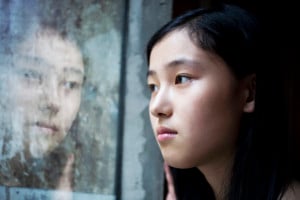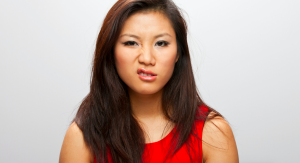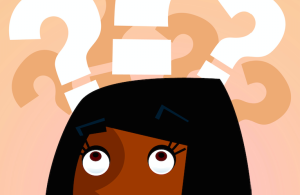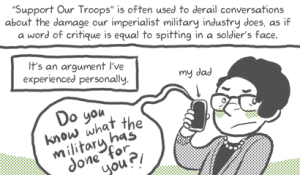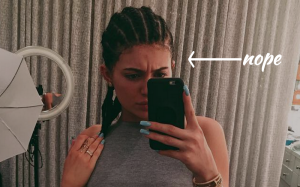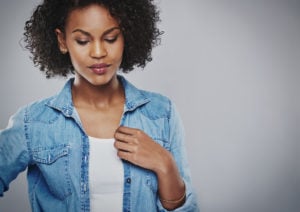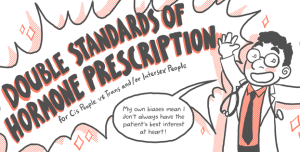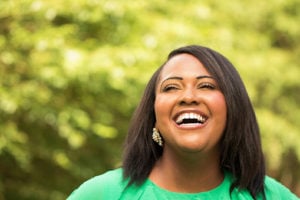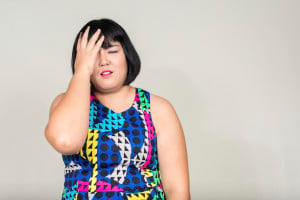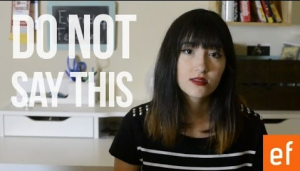Originally published on Mic and cross-posted here with their permission.
Editor’s Note: The first step to addressing racism is to identify when it’s happening, including in the form of white privilege, which this article is teaching. And once you start seeing how racism works, you can start working to dismantle it. To learn how, please read Derrick’s other article: 10 Simple Ways White People Can Step Up to Fight Everyday Racism.
Many white people may never truly understand why incidents like the Michael Brown shooting infuriate blacks and other people of color — even when it’s clear that race plays a large, looming role in how the situation snowballed to the 18-year-old’s death.
This is in part because white people can move through daily life without constantly thinking about how their race will be perceived. Part of having white privilege is the freedom from worrying about racism, a freedom their Black counterparts have never known.
But it gives Black people a unique yet challenging perspective by which they navigate the world.
African-American scholar W.E.B. DuBois called this “double consciousness,” the tension between having African heritage and cultural experiences while encountering institutional racism.
In other words, it’s the internal struggle of how Black people view themselves versus how white society will see them instead — a struggle we now know is shared by many racial minorities in America.
Even though the white majority may never have to deal with this, they should be aware of it. Through awareness, white allies can work to make themselves part of the solution to ongoing racial inequality.
Therefore, in the interest of community-building and general human empathy, we’ve compiled a few of the more common questions that African-Americans may feel compelled to ask themselves over the course of a normal day that white people rarely, if ever, have to consider.
1. ‘Did the officer stop me because of an actual issue or because of my skin color?’
“Driving while Black” is not limited to any one city, but it’s pretty telling that the phenomenon is now being investigated in Missouri.
In a 2013 report by the Missouri Attorney General’s Office, the data showed a disproportionate number of police stops in the majority-Black suburb of Ferguson. According to the Washington Post, Black drivers were stopped in traffic 86% of the time. The picture is also bleak statewide, with Black drivers 66% more likely to be stopped than white drivers.
Maybe it really was because of a moving violation, a broken taillight, expired plates, or any other number of infractions. But for many Black people and people of color, an encounter with white cops while driving is oftentimes simply a question of being seen as an outsider.
“What are you doing here?” becomes a de facto referendum on whether or not someone who’s a minority has any good reason to travel through white or affluent areas with the underlying assumption that it’s to commit a crime.
Even pedestrians get stopped for “walking while Black” — a reality known all too well for a Black TV producer who was confronted, cuffed, and forced to sit on a sidewalk on August 22 because he “matched the clothing and physical characteristics” of a robbery suspect.
As the Los Angeles Times reported, Charles Belk was in the area to attend a pre-Emmy Awards party only to be detained for six hours after leaving a restaurant.
2. ‘If I’m facing a trial, will my peers really be on the jury?’
Observers of Brown’s case already see a potential issue on the horizon with the Missouri grand jury selection: 75% of the jurors are white. The case itself involves a majority-Black St. Louis suburb with a predominantly white police force.
That’s not to say it’s impossible for a white person to adjudicate a criminal matter with fairness and justice, but because the case involves racialized issues of excessive force and police harassment — issues on which most whites and Blacks have vastly differing perspectives — this lack of perspective certainly isn’t an asset.
Unfortunately, racially lopsided juries aren’t simply an aberration, even in the case of Ferguson. In the United States, this is an everyday occurrence.
3. ‘Will a casual hangout with friends in public lead the police to say we’re loitering and force us to move?’
It’s not uncommon for small groups of friends to meet in public — that’s what friends do. But when those bodies are visibly Black or Brown, it may be seen as a potential threat instead of people simply sharing space and time with one another.
Such was the case in November 2013, when police officers in Rochester, NY questioned members of a local school basketball team, as the group of black teenagers waited for a bus that would take them to a scrimmage. After refusing to disperse upon police orders, they arrested three of the youth.
Without that benefit of the doubt, Black and Brown people, young and old, are targeted for police harassment, thought of as conspiring gang members or otherwise as unsavory people who need to take their gathering elsewhere.
4. ‘Will I get stopped and frisked if I wear a hoodie and jeans tonight?’
When worn on Black and Brown bodies in America, common clothing like hoodies and jeans become associated with criminal activity, even if the people wearing them are upstanding citizens.
Of course, when those same articles of clothing are worn in similar ways by white people, perceptions magically change. The clothes become an unsuspecting marker of style and taste, not items meriting an extra level of suspicion or police harassment.
One can only wonder what would happen if cops started feeling up white men and inspecting their belongings while they strolled down financial districts across America, wearing tailored suits, ironed shirts, and muted-colored ties. Arguably, some of them are more inclined to criminal activity than black and brown kids expressing themselves.
5. ‘How will people judge me if I wear my natural hairstyle?’
Perceptions also tend to change when Black and Brown people wear braided or dreadlocked hairstyles, popular choices given the texture and growth patterns of hair in both communities.
Unfortunately, these styles have been long associated with thugs, gangster rappers, and rebels, despite having existed as cultural expressions long before racialized systems were constructed in America.
It’s an unfortunate phenomenon that both R&B artist India Arie and rapper Akon critiqued in the hit song “I Am Not My Hair.”
In the song, Arie asks, “Does the way I wear my hair make me a better person? … Does the way I wear my hair determine my integrity? I am expressing my creativity.”
6. ‘Why aren’t there leaders at this company or organization who share my racial background?’
In the Guardian‘s October 2013 list of America’s best-paid CEOs, all ten were white men, confirming an already-known lack of diversity in the leadership of major US corporations.
Similarly, according to a 2011 report from DiversityInc magazine, Fortune 500 CEOs are overwhelmingly white with racial minorities helming fewer than 5% of companies on the index.
Rarely, if ever, can a person of color look at their company’s executives and see people who reflect their cultures, background, and life experiences.
These concerns have yet to really penetrate the collective consciousness of a majority of the white American workforce.
7. ‘Will my “funny-looking” name get my resume tossed in the garbage bin?’
According to a 2003 study by researchers at the University of Chicago and the Massachusetts Institute of Technology, “white-sounding” names such as Emily or Brendan are 50% more likely to get called for an interview than applicants with “Black-sounding” names like Lakisha or Jamal.
The results stemmed from roughly a year of the researchers sending fake resumes with different names to more than 1,000 want ads listed in the Boston Globe and the Chicago Tribune and measuring the callback rate.
The levels of discrimination were consistent regardless of industry, even among companies that stated, “We are an equal opportunity employer.”
8. ‘Will store reps insist that I can’t afford this expensive item?’
The most recent example of this comes courtesy of none other than one of the world’s richest, most powerful businesspeople: Oprah Winfrey.
While traveling in Zurich for Tina Turner’s July 2013 wedding, Oprah told Entertainment Tonight that she encountered a shop clerk at one handbag shop who refused to show her a bag because it was “too expensive.”
Confused, and attempting to give the clerk the benefit of the doubt, Oprah reiterated her choice, only to be told again that she “didn’t want to see” the bag she considered purchasing.
The thinly-veiled implication here is clear: The clerk didn’t think Oprah actually didn’t want to see the bag; she merely assumed from Oprah’s appearance (read: skin tone) that she couldn’t afford it.
9. ‘Why am I constantly being asked if I need help in this store — and getting followed?’
There’s a difference between good customer service and racial profiling.
It’s known as “shopping while Black,” or the idea that store clerks and surveillance cameras are much more likely to trail Black patrons on the racist assumption that they will steal merchandise.
The issue has long plagued major retailers, with Macy’s recently agreeing to pay a $650,000 settlement in response to a lawsuit alleging that the store’s employees racially profiled African-American and Latino customers at the brand’s flagship store in New York City.
One Black teenager captured the harrowing experience in a series of Vine posts released earlier this summer, showing just how disrespectful it feels to be followed while just casually shopping.
10. ‘Will I get disciplined at work or school if I don’t conform to Eurocentric beauty standards?’
Most workplace and school dress codes don’t allow men or women to wear braids or dreadlocks, and they even sanction certain textures of hair. But these types of discriminatory practices don’t stop at dreadlocks.
White women can wear their natural, straightened or curly hair into the workplace, while Black women who have natural Afros may be directly asked or nudged to chemically alter their hair to blend in better.
Similar requests are made of Black men, who may be told not to grow a natural Afro or curly puff and are instead asked to keep their hair cut low. Although long hair is generally frowned upon for men of all colors in most dress codes, white men can keep their hair at a relatively longer length because it’s not nappy.
Not complying with Eurocentric beauty standards often comes with dire consequences.
In one Orlando, FL school, 12-year-old Vanessa VanDyke was told she’d have to cut her natural hair or face expulsion from the academy because, according to local reports, students began teasing her and the hair became a “distraction” for school officials.
11. ‘When I ask a stranger for help, will they see my skin color and avoid engaging me?’
Sometimes a small amount of assistance can change another person’s life, even if for a brief moment or a simple situation.
Unfortunately, for Black people and people of color, there is the constant worry that their skin color will make others less likely to help them with circumstances ranging from becoming lost during transit or getting in a car accident.
This paradox can even be deadly, as was the case in the murder of Renisha McBride, a 19-year-old African-American woman who sought help from people living nearby after crashing her car. Instead of calling the police or paramedics, the white Detroit resident whose porch she found herself on shot and killed her through a locked door.
12. ‘When I move into a new area, will the neighbors start moving away because of my race?’
“White flight” happens when white residents migrate to other areas of a city or region in order to avoid racial integration with blacks and people of color.
It’s happened in virtually every major American suburb and city, including the St. Louis metropolitan area, where white residents have fled the city since the 1950s, moving instead to suburban areas that have grown drastically over the past few decades.
Ferguson is but one of many areas they’ve abandoned in those decades, with census estimates showing the Black population increasing drastically at a trade-off with whites.
13. ‘Will I be a walking racial trope if I eat this food item in front of other people?’
Fried chicken. Watermelon. Collard greens. Tacos. Rice. Beans. Sushi. Dumplings. Noodles. The list goes on and on.
For Black people and people of color, certain foods have historically been more common than others in their communities, given cultural experiences and other factors.
But instead of being celebrated, these items are too often made into nasty caricatures and stereotypes, something that reached a fever pitch during mid-20th century product commercials in the United States.
In one example, African-American talk show host Wendy Williams has repeatedly said she refuses to eat fried chicken on national television, for fear of being seen as the minstrel once commonly portrayed on the airwaves.
14. ‘Is this potential mate really interested in me or do they have an odd fetish or obsession related to my racial background?’
Dating should be an experience where two people meet, learn more about each other, and explore various pathways for romantic involvement or even building a future together. But racial differences between the potential matches can taint that process.
Numerous people of color have long decried being fetishized for their backgrounds.
Whether it’s the stereotype of all black men having strong sexual stamina and elephant trunk-sized penises or the skin tones and so-called docile, overly submissive demeanors of Asian women, many minorities must ask themselves if their cultural heritage is being appreciated or mocked in a dating encounter.
15. ‘All other things being equal, would my life be easier if I were a member of the dominant racial group?’
Everyone has their own struggles, and no one can really control the circumstances we’ll encounter in life.
What we can control are our attitudes, preconceived notions, and how we subscribe to destructive lies, stereotypes and tropes about people from different racial backgrounds — especially Black people and people of color.
And if you asked Fox News anchor Megyn Kelly, she’d agree with this inconvenient truth: White privilege indeed exists.
[do_widget id=”text-101″]
Derrick Clifton is a Staff Writer at Mic covering identity, culture and politics. A news commentator and reporter on issues of race, gender and sexuality, Derrick is also a master’s candidate at the Medill School of Journalism. Derrick identifies as a Black, queer, gender non-conforming, urban-raised person of faith with a disability. He’s also the author of the forthcoming book HEART WERK, a autobiographical series of essays about navigating life and love within multiple marginalized identities. Follow him on Twitter @DerrickClifton.
Search our 3000+ articles!
Read our articles about:
Our online racial justice training
Used by hundreds of universities, non-profits, and businesses.
Click to learn more
Most Read Articles
- « Previous
- 1
- …
- 30
- 31
- 32







